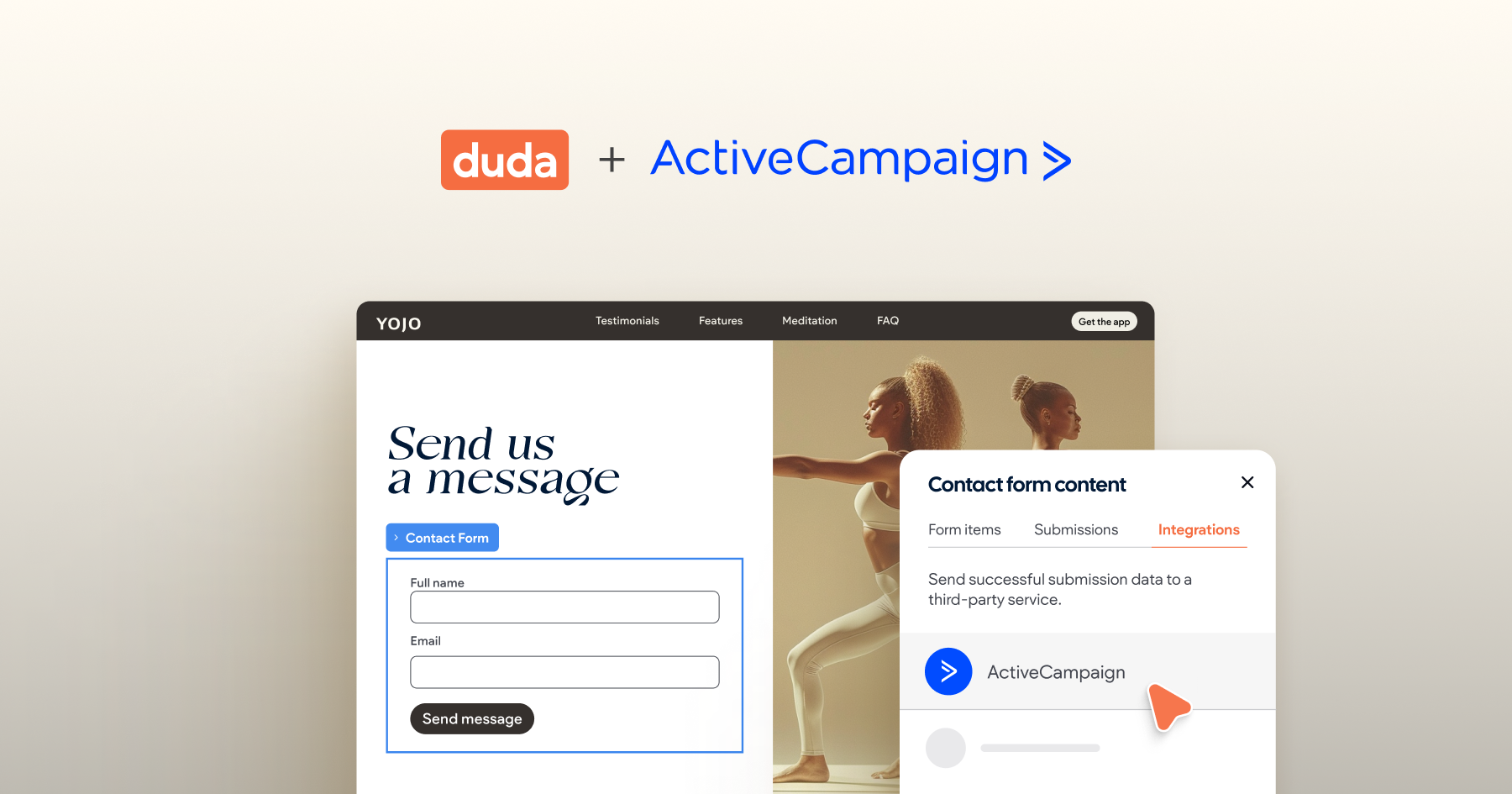Duda, the professional website builder for digital agencies and SaaS platforms, today announced the integration of its platform with
ActiveCampaign, a leader in marketing automation, email marketing and CRM for businesses of all sizes. This integration allows Duda customers to leverage ActiveCampaign’s marketing platform through a custom-built Duda Connector integrated directly into the website-building editor.
The partnership between Duda and ActiveCampaign enables more than 20,000 agencies and SaaS companies, supporting over 1 million client websites, to enhance their services, improve client interactions, and unlock new business opportunities in both web development and email marketing automation.
“Duda empowers web professionals to build and integrate websites at scale by reducing the need for time-consuming manual configuration,” said Itai Sadan, CEO and co-founder of Duda. “By extension, this allows small business clients to shift their focus from the mechanics of email marketing to the art of customer engagement.”
ActiveCampaign’s powerful automation platform helps over 180,000 businesses in 170 countries grow by scaling and personalizing their customer experiences. It provides access to pre-built automations that combine transactional email, email marketing, marketing automation, ecommerce marketing, and CRM, enabling 1:1 experiences that connect across all channels and throughout the entire customer lifecycle.
“Let’s say a visitor purchases a product from a Duda site. With the ActiveCampaign Duda Connector, this purchase can automatically trigger a personalized thank you email and initiate a follow-up sequence, all segmented by the customer’s purchase behavior and preferences. This means that web professionals can now offer advanced trigger-based marketing without the headaches of writing code or manually maintaining a customer database,” said Sadan.
"Partnering with Duda amplifies the value we bring to agencies and their clients by seamlessly integrating marketing automation into the web development process," said Shay Howe, chief marketing officer at ActiveCampaign. "This collaboration empowers agencies and SaaS companies to deliver personalized, data-driven customer experiences without the need for complex technical setups, allowing them to focus on what truly matters — growing their customers’ businesses."
The integration between Duda and ActiveCampaign is possible thanks to a custom-built Duda Connector that works within the website building editor, connecting directly to Duda’s native contact form, eCommerce, and membership solutions.
Connectors are a new category on the Duda App Store, enabling data transfer between Duda and other platforms, like CRMs, ERPs, and more. These connectors allow web professionals to provide richer client sites with more robust integration without writing code. They can enhance client sites by seamlessly connecting powerful integrations with their favorite platforms directly into their websites.
Since launching the Duda Connectors program, Duda has released integrations with ActiveCampaign, MailChimp, Hubspot, Slack, and Facebook Conversions. The program will also partner with Pipedrive, Salesforce, RD Station, Zoho and Go High Level in the near future.
“We have seen immediate success with these new integrations, aiding our agency and SaaS customers in building advanced capabilities into their clients’ websites,” said Justin Wells, Senior Manager of Product Partnerships at Duda. “They are built to improve agency productivity, extending 1:1 connections to various platforms our customers and their clients use. Duda Connectors allow our agency and SaaS partners to capture leads, track conversions, create CRM contacts, send emails, and more — all without lifting a finger.”
For more details on Duda’s integration with ActiveCampaign, visit
here. For more information on Duda Connectors, visit
here.
About ActiveCampaign
ActiveCampaign helps small teams power big businesses with the must-have platform for intelligent marketing automation. Customers from over 170 countries depend on ActiveCampaign’s mix of pre-built automations and integrations (including Facebook, Google, WordPress, Salesforce, Shopify, and Square) to power personalized marketing, transactional emails, and one-to-one CRM interactions throughout the customer lifecycle.
ActiveCampaign holds the highest customer satisfaction rating among Marketing Automation, E-Commerce Personalization, Landing Page Builders, and CRM solutions on
G2.com and is one of only a handful of software solutions with over 10,000 positive reviews. ActiveCampaign has also been named the Top Rated Email Marketing Software on TrustRadius. Learn more and start your free trial at
ActiveCampaign.com.







